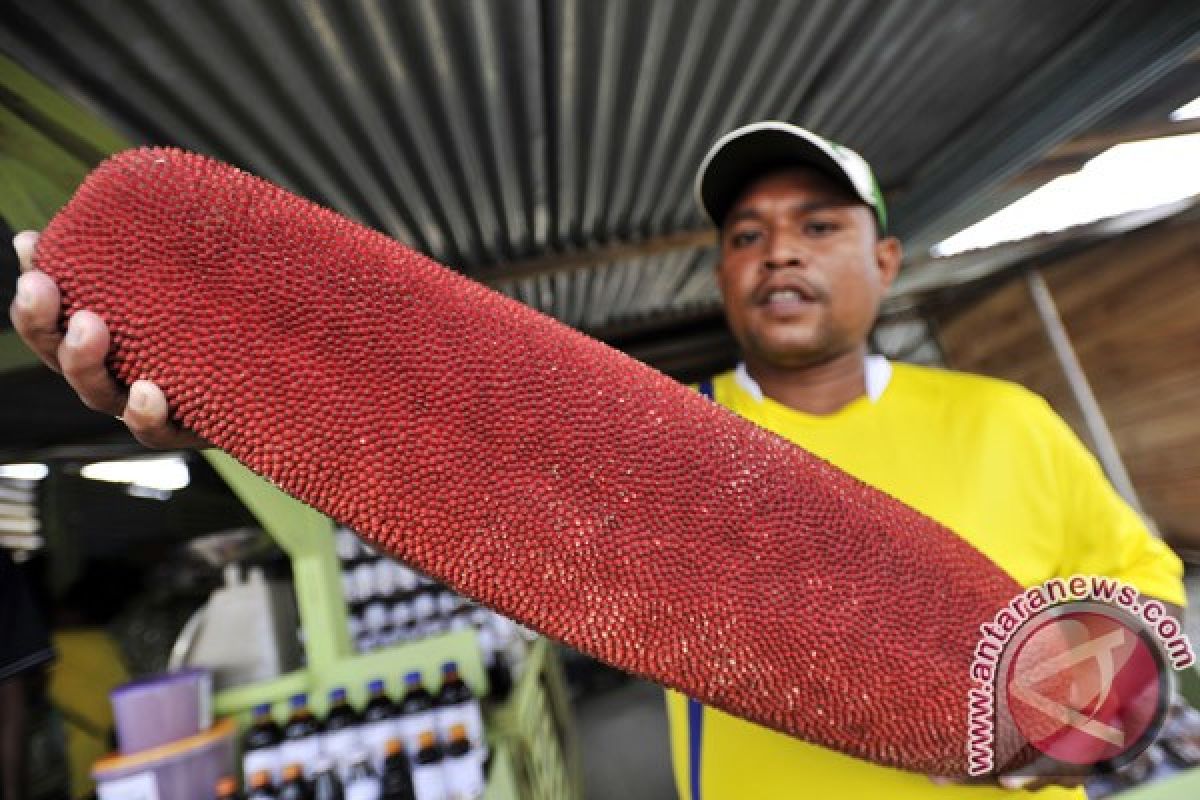Known as the Land of Cenderawasih, Papua, from the West to East, has a large number of animals and plants, making up a balanced environment.
Papua and West Papua are known to have abundant biodiversity that includes a lot of medicinal plants that can be developed for the local people`s welfare.
Among the medicinal plants growing in the regions are Rhododendron Macgregoriae, which is effective in fighting bacteria; Myrmecodia Aureospinosa, which can cure cancer and other diseases; and Pandanus Conoideus, which is popularly known as Red Fruit.
Hence, the Agriculture, Food Crops and Plantation Agency of Mimika District is implementing a program to plant Red Fruit seeds on a 40-hectare land in 2018.
The agency Secretary Stepanus Susanto remarked in the district town of Timika on Thursday that the planting of Red Fruit seeds will be carried out at a number of points in the district.
In 2018, the agency will also help local farmers by building a management center and giving them processing machines.
Susanto remarked that the management center will be built on the farmers` land, while the processing machine will be through the support from the provincial government of Papua.
The agency continues to cultivate Red Fruits in order to become one of the superior products.
Red Fruits that have been traditionally processed have begun to be changed in the way they are processed with the help of machines up to packing.
Hence, the Red Fruit farmers are encouraged to bring their harvested products to the processing units of the local Agriculture Office to be processed together.
Red Fruit grows well in all Papua regions, especially in the Jayawijaya mountain area of Wamena and Tolikara, Jayapura, Manokwari, and Nabire, in addition to Timika and Ayamaru in Sorong.
The fruit is traditionally prepared by splitting it, wrapping it in leaves, and then cooking it in an earthen oven to produce juice, which is used as skin and eye medicine and also for worm treatment.
Based on the analysis conducted by Bogor Institute of Agriculture (IPB), the fruit actually contains high amount of carotenoids and tocopherol, which is rich in Vitamin E supplements.
There are over 600 known carotenoids divided into two classes, xanthophylls, which contains oxygen, and carotenes, which are purely hydrocarbons and contain no oxygen.
People consuming diets rich in carotenoids from natural foods, such as fruits and vegetables, are healthier and have lower mortality from a number of chronic illnesses.
The total amount of carotenoids in a fresh Red Fruit is 34,000 ppm, while in Red Fruit extract, it is 8,600 ppm. The total amount of tocopherol in a fresh Red Fruit is 133,000 ppm, while in Red Fruit extract, it is 17,000 ppm.
Besides carotenoids and tocopherol, Red Fruit extract also contains essential fatty acids, such as lauric acid, palmitic acid, and stearic acid; and non-essential fatty acids, such as palmitoleic acid, oleic acid, linoleic acid acid, and omega-3.
From the high-compound ingredients of antioxidants as well as fatty acids within the Red Fruit, it was rationally understood that its extract can be used as an alternative food supplement to enhance physical stamina.
The stamina is caused by the chemical ingredients from the oil of the Red Fruit, such as Beta-carotene and tocopherol, an active compound of essential fatty acids and non-essential fatty acids.
The antioxidants contained in the Red Fruit extract will neutralize the free radicals that are believed to cause diseases such as diabetes, hypertension, stroke, cancer, leukemia, and HIV-AIDS.
Red Fruit is also useful for healthy people to boost their stamina and body endurance.
Besides containing antioxidants and antiviral compounds in high amounts, Red Fruit also contains fairly complete essential vitamins and minerals.
It is known as the traditional medicine of Papua, which has been empirically proven, and as an alternative medicine to cure diseases such as cancer, HIV/AIDS, tumors, and hypertension.
Besides Red Fruit, Papua is also rich in "ant nest" medicine, which has been used by the public for several years in Asia and Europe.
Since early 2005, ant nest from Papua has been introduced to the public, and to date, a lot of people are still discussing its effectiveness to cure various diseases, ranging from the mild ones such as headaches, rheumatism, nosebleeds, and ulcers, apart from gout and hemorrhoids, to severe diseases such as tumors, cancer, liver, and lung tuberculosis, in addition to kidney disorders, prostate, and coronary heart disease.
In addition, these anthill plants can enhance and accelerate the production of breast milk and restore the health of women after childbirth, increase stamina, and be used as an aphrodisiac (increases sexual desire). Some even say that the content of flavonoids may control the development of herpes and HIV-AIDS.
Editing by Rahmat Nasution
Reporter: Otniel Tamindael
Editor: Suharto
Copyright © ANTARA 2018












